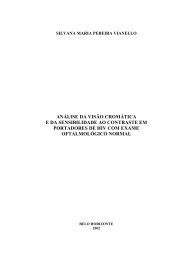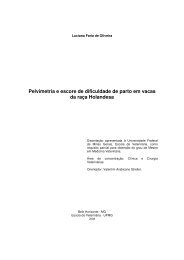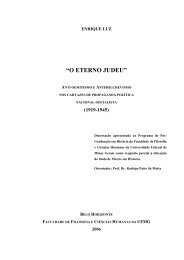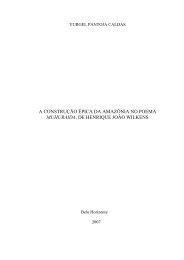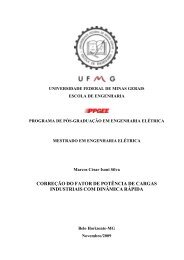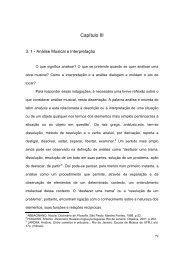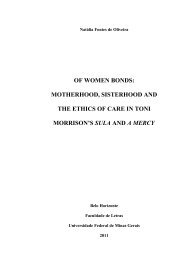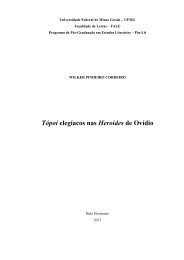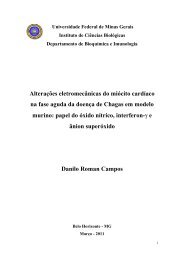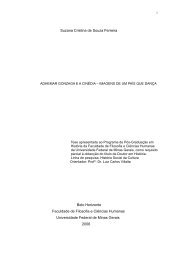Estudo do papel da proteína induzida por glicocorticóide Anexina ...
Estudo do papel da proteína induzida por glicocorticóide Anexina ...
Estudo do papel da proteína induzida por glicocorticóide Anexina ...
Create successful ePaper yourself
Turn your PDF publications into a flip-book with our unique Google optimized e-Paper software.
ABSTRACT<br />
The inflammatory response is initially characterized by the release of pro-inflammatory<br />
mediators and the migration of leukocytes to the inflammation site. On the other hand, this<br />
process is finely controlled by the action of anti-inflammatory and/or pro-resolution mediators<br />
that promote resolution of inflammation and helps the return to tissue homeostasis. Annexin<br />
A1 (AnxA1) is a glucocorticoid (GC)-induced protein that mediates several GC functions.<br />
AnxA1 acts as a potent en<strong>do</strong>genous modulator of inflammation by preventing the action of<br />
enzymes that participate in the production of pro-inflammatory mediators, inhibiting the<br />
leukocyte transmigration and inducing phagocytosis of apoptotic cells. Thus, this study<br />
investigated the role of AnxA1 on the spontaneous and pharmacologically-induced resolution<br />
of the inflammatory response. For this, we have used a murine model of pleurisy induced by<br />
LPS (lipopolysaccharide) where BALB/c mice were injected with 250 ηg LPS by intrapleural<br />
route. After that, the cells in the pleural lavage were collected at different post-injection<br />
intervals and analyzed for total and differential leukocyte count, number of cells with<br />
apoptotic morphology, signaling pathways involved in apoptosis and cell survival, and<br />
AnxA1 protein expression. Our results have shown that the injection of LPS induced an<br />
accumulation of neutrophils in the pleural cavity which was maximal between 8-24h,<br />
decreased in 48h with complete resolution occurring at 72h. The natural resolution, showed<br />
by the reduction of neutrophils numbers observed at the time of 48-72h, was accompanied by<br />
an increase of mononuclear cells and was associated with an increase of apoptotic events<br />
between 8-48h, as shown by morphological (apoptotic cells count) and biochemical (increase<br />
of caspase-3 cleavage and Bax) criteria. The protein AnxA1 in intact active form (37 kDa)<br />
was detected in animals injected with PBS, strongly decreased in the active phase of<br />
neutrophilic inflammation (4-24h) and increased during the natural resolution, as seen in 48-<br />
72h after LPS challenge. There was a pre<strong>do</strong>minance of AnxA1 protein cleavage (33 kDa<br />
band) during the time-points of higher neutrophil recruitment. Treatment of animals with anti-<br />
inflammatory drugs, which have been previously shown to induce resolution in the same<br />
inflammatory model, to know: rolipram (PDE4 inhibitor), wortmannin (PI3K inhibitor) and<br />
dexametasone (synthetic glucocorticoid) decreased the number of neutrophils into the pleural<br />
cavity, with an increase of AnxA1 active form expression and prevention of its cleavage.<br />
Also, the increase of AnxA1 induced by these drugs has been associated with activation of<br />
pro-apoptotic proteins (increase of Bax and caspase-3 cleavage) and decreased



